5 ways to love your woman captain at the helm – Part 2
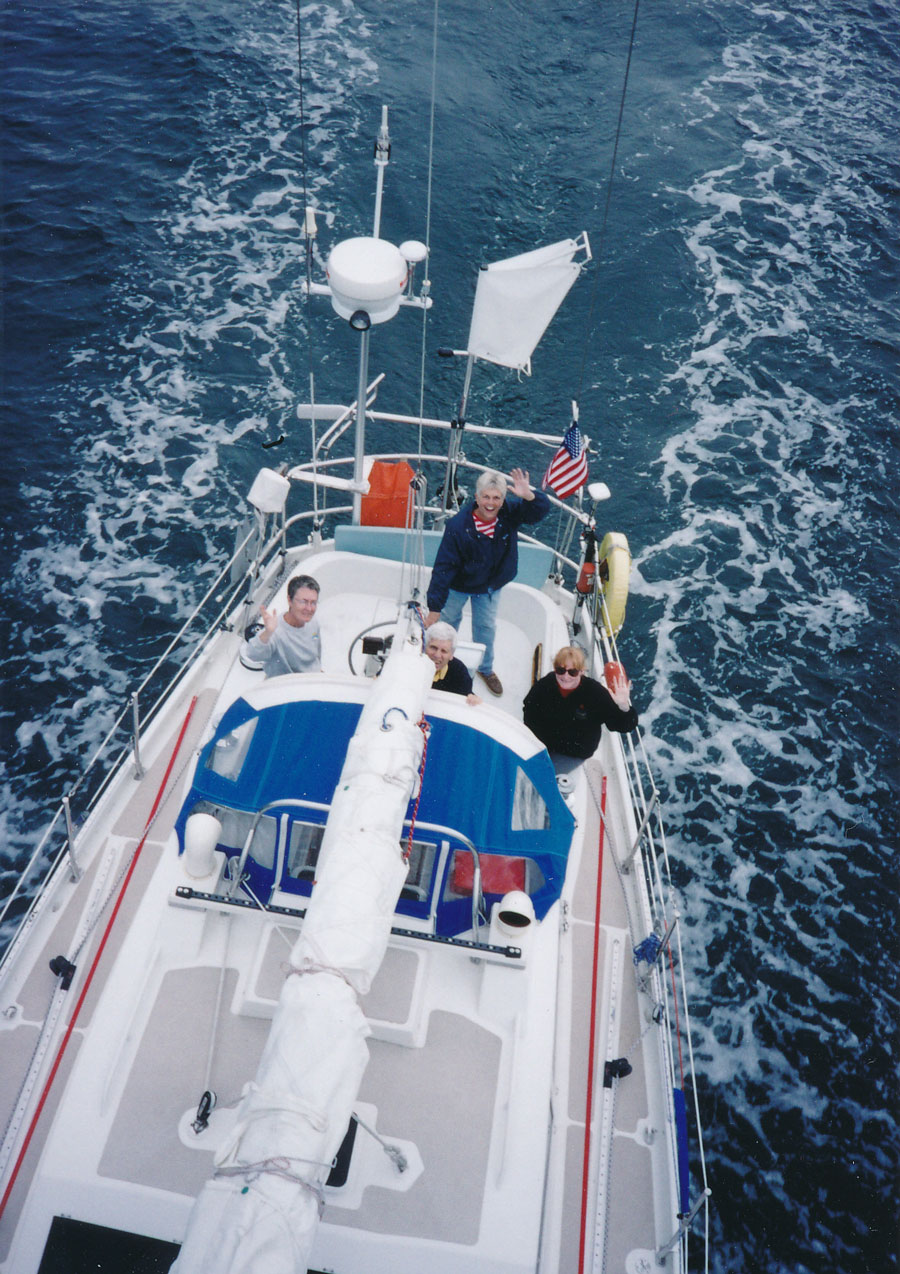
Estimated reading time 15 minutes – For serious pleasure boaters, one of a captain’s most useful habits is to keep a log. On ships, they call it the ship´s log, the logbook, or simply the log. It’s an important document capturing a detailed record of the events related to boat management, operation, and navigation.
Now, I want you to imagine that you are looking at your actual notes in the narrative log of your sailboat. “I am heading from Peterhead, Scotland to Eyemouth, England. That is about only 50 miles journey. [Depending on the winds, that is about 6 – 9 hours trip]
“For Eyemouth, the cruising guide says ‘A busy fishing harbor, safe in any weather but not to be approached in strong winds from between North and East. Bar varies but normally dredged to 2-meter MLWS. [MLWS stands for Mean Low Water Springs. The height of mean low water springs is the average throughout a year of the heights of two successive low waters during those periods of 24 hours (approximately once every two weeks) when the range of the tide is greatest.] Yachts welcome. If any sea is running, approach after half flood. Entrance 16 meters wide. A red flag by day, flashing red light at night means harbor is closed.’
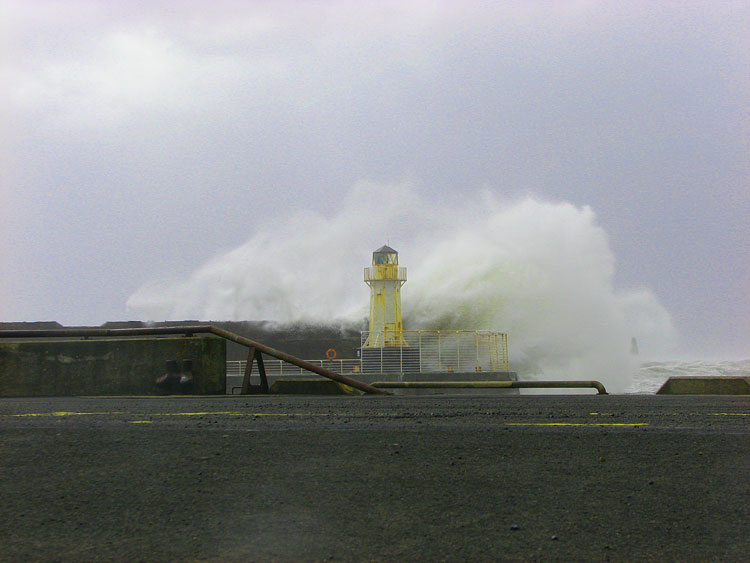
“I had sailed from Kirkwall, Orkney [Scotland] in company with another yacht, Lotti of Loxley, and they were heading to Eyemouth, a harbor that they visited several times. We were in a marina at Peterhead, a busy commercial port on the east coast of Scotland. To arrive at Eyemouth at noon, the recommended three hours before high water, I had to leave during the night.”
“Sat. July 28, 2007: to Eyemouth, overnight. Windy before 10 a.m. with the rising barometer. Spell of rain and then clearing. James of Lotti kindly brought me a five-day forecast he got at the library. Light rain squalls and I contemplate staying until the weather is more settled. By 6 p.m. it seemed to have settled down and thinking (erroneously, it turns out) that the wind will go down overnight, I decide to leave. The crew from Lotti came to do my lines and waved me off, taking photos.”
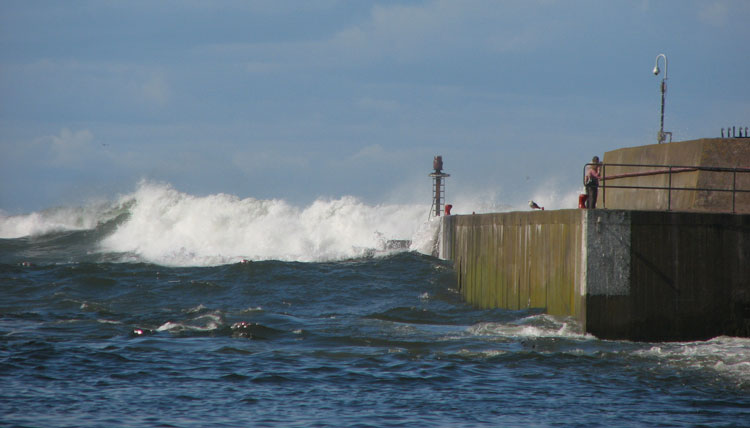
In case you haven’t already guessed it, you just read one of the actual narrative log entries of our guest woman captain, Priscilla Travis. The most significant part of the entry has to do with its context, that this was her first long, solo overnight passage. (You can find her complete log entry in my “2 Things I learned” section below.)
Let’s continue imagining: it is pitch black, you are on a 42-foot sailboat in the middle of heavy seas, somewhere off the shores of Scotland, and it’s your first solo overnight voyage. I’ll let you think about that a bit, let it sink in, and imagine how you may have felt being in that environment for hours. On top of it, that night turned out to be a challenging one. The only bright light of the night was a voice from Lotti of Loxley calling another ship. Although Priscilla was not able to see it, she learned that Lotti had decided to join her in that weather window.
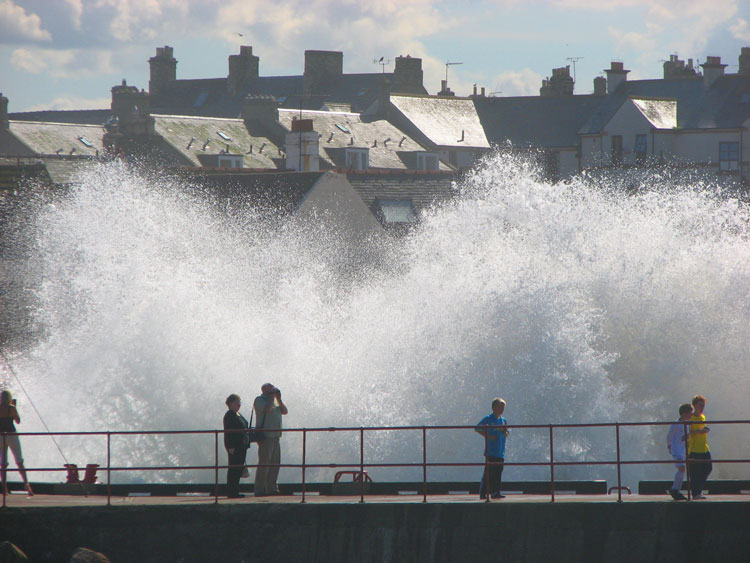
Seven hours or so later as she crossed the mouth of the Firth of Forth at daylight, Lotti appeared astern and closer to the shore. They met at a safe distance and, since Lotti knew the harbor, she followed it while single-handedly braving high winds and strong currents in the narrow channel.
Steel boats to steel nerves
During her first solo night voyage, Priscilla knew that Nomad, her 42-foot steel boat with aluminum decks, was both a strong and safe vessel. After all, she and her husband had it built it from scratch and knew it inside out. They had commissioned Canadian boat designer Ted Brewer. He is a lifelong sailor with over 260 designs to his credit today, although he is no longer designing custom boats. The Travis’s knew that they wanted a design suitable for a cruising couple with occasional guests. “Ted designed us this boat,” said Priscilla. Then they had to find a boat builder who was competent to build it. They wanted a steel boat but with aluminum decks. She added, “It was a little bit unusual approach except on Naval ships. Naval ships have steel hulls and aluminum superstructures. And the builder we chose was in Norfolk, Virginia, right next to the Naval base. And he knew about the technology for building steel and aluminum together. So we were the, probably, the first yacht in America to be built with an aluminum superstructure and the steel hull.”
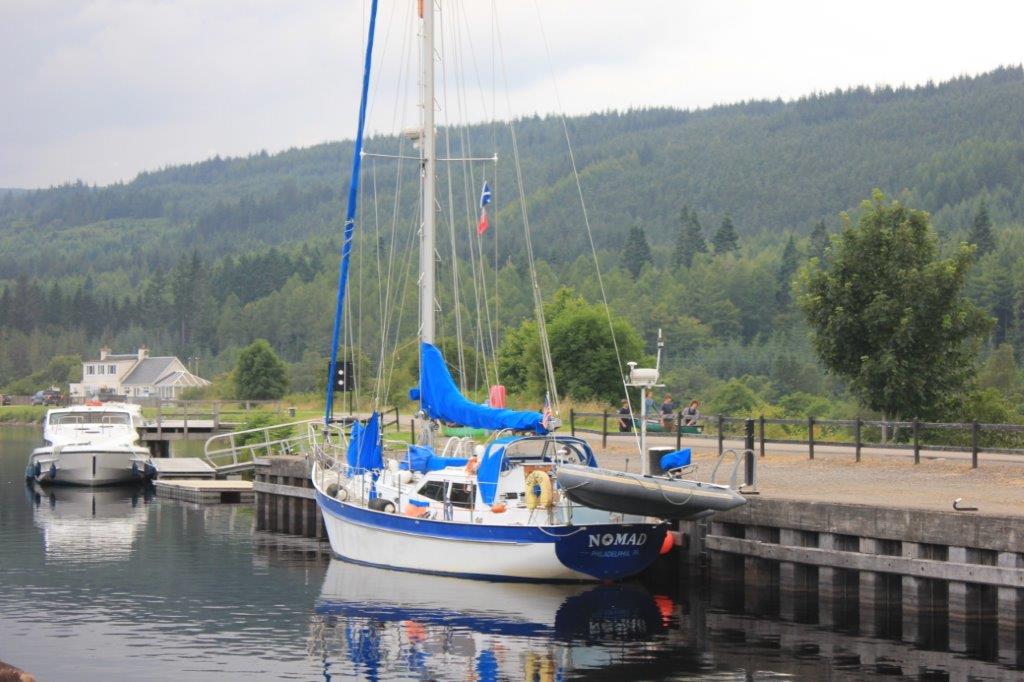
We are used to seeing mostly fiberglass boats here in the US, so I asked Priscilla what made them decide that they wanted a steel boat. The answer was both interesting and surprising. Their first boat happened to be steel. One day, it broke loose during a hurricane that actually went quite far up the Hudson River. They were on a mooring at the boat club where they kept their boat. Priscilla said, “The hurricane had driven boats up to the railroad tracks near Ossining, New York, by Sing Sing prison. It had negligible damage; all the other boats in the area that broke their moorings and went up on shore were in fiberglass scraps. We thought, ‘Wow, that’s pretty good. It did a circumnavigation and it survived a hurricane. Let’s maybe make our next boat steel as well.’” She continued, “Because steel or aluminum is a metal, they hold up better than fiberglass. And you can do more with metal. Fiberglass has to have frames to make the hull strong. Steel or aluminum have minimal frames. They can be more widely spaced and you can have the accommodation in the vessel more open than perhaps you can have with some fiberglass boats.” Priscilla explained that in Europe, you can see a lot of steel and aluminum boats, with the aluminum boats often left unpainted. People don’t mind the gray appearance.
There is always a first time
In Part 1, we learned that Priscilla has been sailing yachts of over 30 feet for more than 35 years, logging some 105,000 sea miles, with more than 5,000 miles as a solo skipper. When asked what it’s like having a solo voyage, she laughed and said, “I think this may be true for most people when you try something for the first time. At first, you’re nervous: ‘Oh gosh! I’m going to be alone from X to Y. Can I do it? What if . . .?’” She continued, “You prepare everything you need for the trip before you depart. Once you move away from the dock or weigh anchor, you are so busy navigating, keeping a lookout, and tending to the operation of the vessel that you most likely will not be reflecting on how you feel. Singlehanding [solo sailing] takes the ability to preplan and concentrate on the essentials of every moment. If there are periods in a trip where everything is going smoothly and the vessel’s on autopilot, maybe you can think, ‘Wow, I’m really doing this,’ but not for long. The needs of the vessel come first. Coastal passages take more concentration than open water sailing.” Then, what comes next? Priscilla said, “When you arrive at the destination, you don’t think about the experience until you’re safely tied up or anchored and the engines are shut down.”
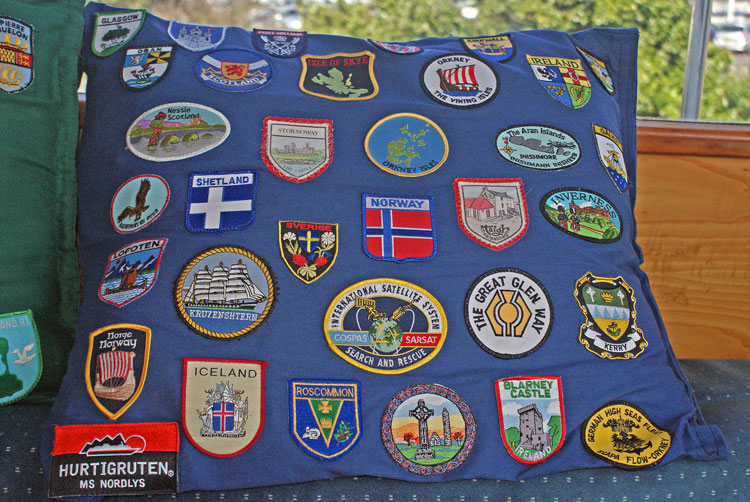
Reflecting on her earlier comments covered in Part 1, saying that you have to want to do it and you don’t have to learn it all at once, Priscilla’s advice to all pleasure boat captains is, “You can apply this to doing anything new: ‘Oh, gosh, I’m going to replace the injectors. Can I do it? What if. . .?’ Read the books, watch the videos, assemble the tools and parts, remove and replace the injectors. Bleed the engine. ‘Dang! It starts and runs! Whoo hoo!’”
Today’s goodbye is tomorrow’s hello!
One of the things I value most about boating is the unique camaraderie and support that pleasure boaters will offer each other on the water, building friendships that last. Priscilla, through her voyages, had plenty of that and still has it. The uniqueness of her prayer flags are a testament to it.
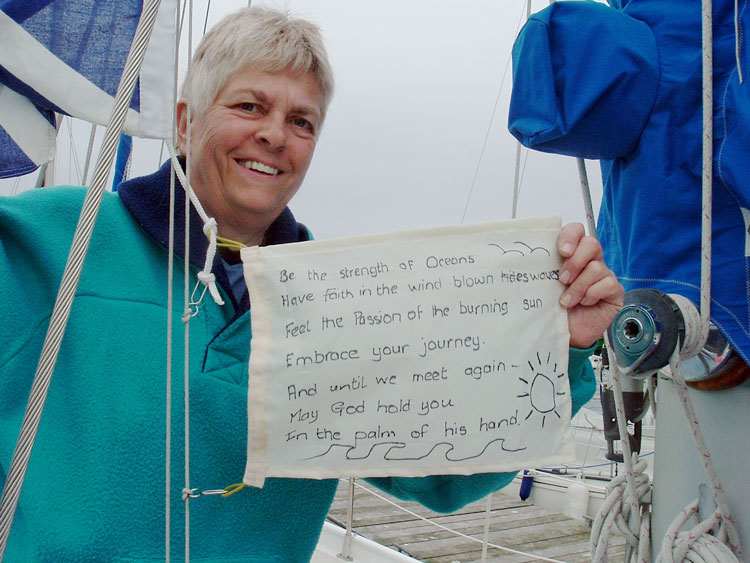
Prayer flags were made by Joan, a British sailing friend. It is hard to ignore or forget. Each summer, she made prayer flags for some of her sailing friends, and Priscilla flew them through their summer cruises. One read:
Today’s goodbye is tomorrow’s Hello!
“May the Warmth of your Welcome,
The Thoughtfulness of your Actions
The Gift of your Friendship,
Enrich the Lives of
All those you meet
And Infect the World.”
Jer ’07
This flag combined lines from several Irish and Scottish poems and blessings. How great and wonderful that is!
Encounters with officials across the pond
Over 13 summers, when she was cruising northwest Europe, Priscilla met various Customs and Marine Police officers as she sailed between Ireland, England, Scotland, Norway, and the Faroe Islands. That is a normal event due to crossing country boundaries, arriving by sea, especially while carrying an American flag, plus being a solo woman sailor.
Priscilla said, “All the officers were friendly and helpful, seeming more interested in the boat and me, particularly when I was sailing solo, than in an official visit. American-flagged yachts are somewhat of a curiosity over there, especially in remote ports, so Nomad attracted attention.
Just like in America, vessel inspections are normal occurrences all around the world. In Priscilla’s case, only one visit involved a vessel inspection. It was while entering Stornoway Harbor (Isle of Lewis, Outer Hebrides). She said, “We passed HMS Customs vessel Searcher moored at a quay, and lo and behold, two officers came aboard and did a 90-minute full search, looking in everything, including the starboard water tank under a bunk. The Searcher was in the harbor for repairs and two Customs officers took the opportunity to add a vessel inspection to their log. They were pleasantly conversational, and I asked them to sign my ship’s guest book.”
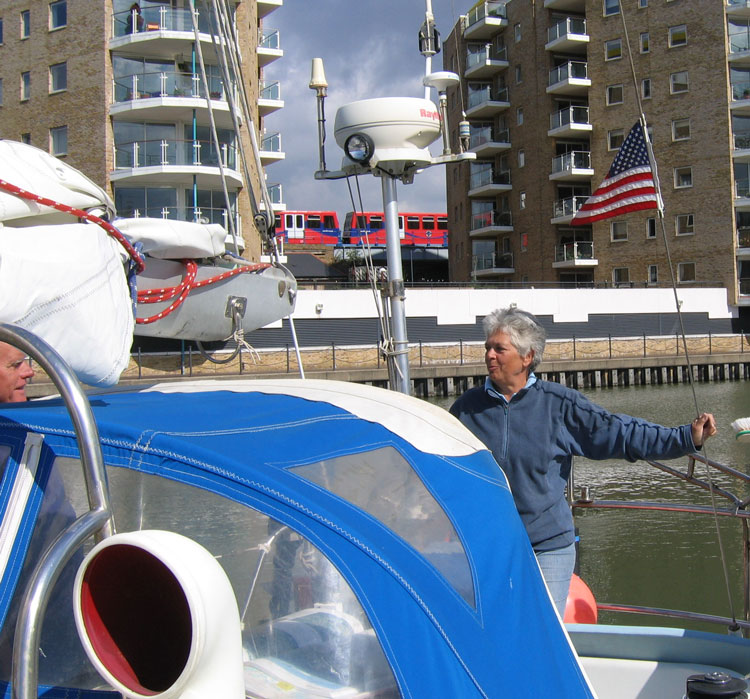
She had some other in-person visits from officials. They were routine and social. Priscilla said, “Going up the Thames to London, a Metropolitan Police boat was patrolling the river and, of course, they saw Nomad’s American flag. They didn’t stop us, but a few hours later an officer came by the marina, checked my passport and we chatted about his love for the Thames. He said, ‘I’ll put your boat into the computer and you’ll not be boarded again.’ “
At Poole on the south coast of England, on a sunny and hot day, a Special Forces police officer stopped by Nomad for a social visit. He had heard from a colleague at another port about “the solo woman sailor on the American yacht.” She said, “He was reading Joshua Slocum’s classic Sailing Alone Around the World (1900) for the first time and he had become enthusiastically enamored of the sea. Although inexperienced on the water, he went out on friends’ powerboats. He had been in the Special Forces for 27 years, so retirement at a young age made him look to the possibilities.” Priscilla added, “I showed him the boat and gave a little general advice about getting started. He was a nice bright chap and maybe he’ll follow his dream.”
I asked her if officials behaved differently towards mariners than, let’s say, when we arrive by airplane. She said no, then added, “I can’t speak to the UK right now because of Brexit. One of the reasons I brought my boat back to the US in 2015 is from what I heard about the possibilities of all the problems with Brexit with having a foreign yacht in the UK. So I figured, I’m not going to stay over here when it’s been so easy for all the years that I’ve been there. So I came back and I don’t know what Brexit’s doing right now for yachts that want to stay long term.”
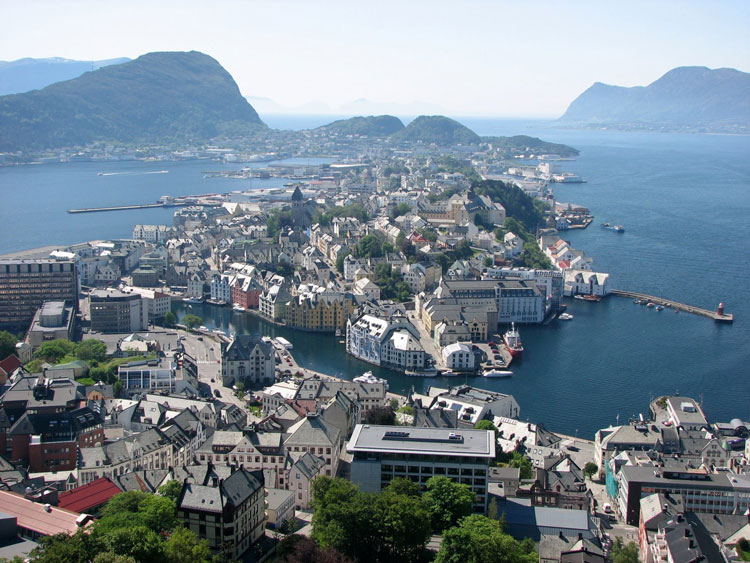
Priscilla continued, “When I was in the UK, I had to leave every 18 months and go to a non-EU country. The nearest non-EU country was Norway. That’s not a problem. I went to Norway every, essentially every two years, because I got an extension from Customs. So every two years, I went to Norway. One year, I went to the Faroe Islands. One year, I went to the Channel Islands, which also counted as leaving the UK. So no matter where you cruise, you have to know what the entry and stay requirements are for the particular country.”
So, after all those wonderful sea voyages and experiences visiting Scotland, England, Ireland, the Faroe Islands, and the west coast of Norway, which one was the most desirable destination for Priscilla? It turns out that her two favorite destinations are Scotland and Norway. She said, “I think both the west coast of Scotland and the west coast of Norway, North of Bergen. The reason is the water’s deep. So if you have a vessel with two-meter or more draft, you don’t have to worry very much about touching the bottom, like you do in a lot of places in the US. Also, the scenery is magnificent on both the west coast of Scotland and the west coast of Norway.”
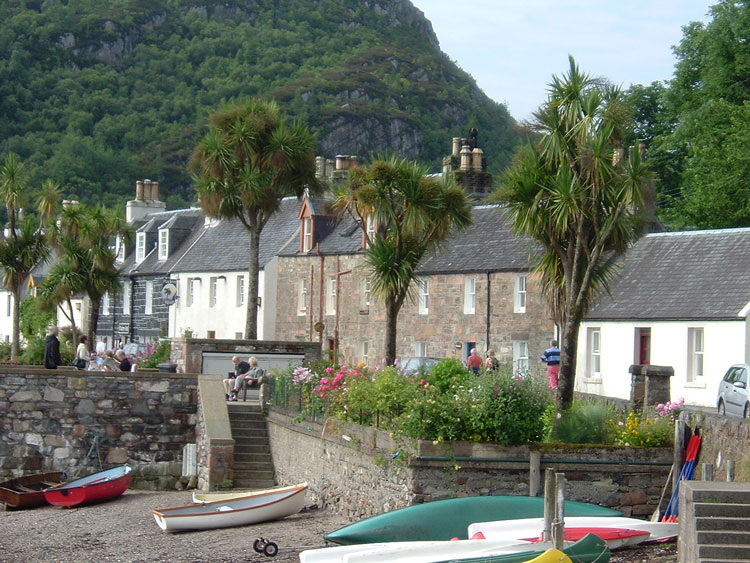
Priscilla said, “The west coast of Scotland has the Gulf Stream going by them. So in the summer, the cruising weather is very much like Maine with less fog. And that’s one of the reasons why I kept going back. I could have gone to the Mediterranean or wherever, but I really liked the people and the variety and the summer weather in Scotland and that high latitude of the west coast of Norway.” Due to the relative remoteness of the harbors that she visited, where normally not too many yachts visited, let alone American-flagged ones, the locals took a lot of interest in Priscilla and her boat Nomad. She said, “I have been invited on more than one occasion to either attend church or go to a wedding of local people.” She added, “It is so special. They’ll say, ‘You gotta be here Saturday. Clyde and Patricia are getting married. You want to come.’ What a treat to be invited to somebody’s wedding and a reception in somebody’s home or their back garden. Fabulous! Those are really, really special moments when you have enough time and you don’t say, ‘Well, I’ve got to be back in so-and-so by tomorrow. I can’t stay.’ [You say,] ‘Well, yeah, I can stay. Thank you so much.’”
There you have it. How can you not love this story and what a woman captain has accomplished? We need to encourage more women to become captains. All they need to do is learn boating, just like a man. Then treat them as equals at the helm.
Well, that is it for now. More on women captains on the water in our next post, Part 3 of this story. You can read 5 ways to love your woman captain at the helm – Part 1 here.
Stay well. I hope to say hello to you if you spot my boat, Life’s AOK, in one of the locations that I’m hoping to visit in 2021, that is if Coronavirus permits us.
I bid you Fair Winds and Following Seas.
Cover photo: Captain Priscilla Travis on Nomad motoring to Newfoundland, Canada with her friends.
2 things I learned
- The full entry of the Nomad’s narrative log is a very interesting one. It’s provided below for your reading pleasure.
“I am heading Peterhead, Scotland to Eyemouth, England. That is about only 50 miles journey. [Depending on the winds, that is about 6 – 9 hours trip]
“For Eyemouth, the cruising guide says ‘A busy fishing harbor, safe in any weather but not to be approached in strong winds from between North and East. Bar varies but normally dredged to 2 meter MLWS. [MLWS stands for Mean High Water Springs – The average of the two high tides on the days of spring tides.] Yachts welcome. If any sea is running, approach after half flood. Entrance 16 meter wide. Red flag by day, flashing red light at night means harbor is closed.’
“I had sailed from Kirkwall, Orkney [Scotland] in company with another yacht, Lotti of Loxley, and they were heading to Eyemouth, a harbor that they visited several times. We were in a marina at Peterhead, a busy commercial port on the east coast of Scotland. To arrive at Eyemouth at noon, the recommended three hours before high water, I had to leave during the night.
“Sat. July 28, 2007: to Eyemouth, overnight. Windy before 10 a.m. with the rising barometer. Spell of rain and then clearing. James of Lotti kindly brought me a five-day forecast he got at the library. Light rain squalls and I contemplate staying until the weather is more settled. By 6 p.m. it seemed to have settled down and thinking (erroneously, it turns out) that the wind will go down overnight, I decide to leave. The crew from Lotti came to do my lines and waved me off, taking photos.
“I called Peterhead port control and at 6:45 p.m. motored out of the marina in light mist. Rollers from the north are on our stern and there was also a rainbow. Some sun near 8 p.m., but clouds quickly covered it. Spent time in the pilothouse with the radar, sailing under yankee jib and engine at 1900 rpm. There is a northerly swell and a warm westerly wind over the land. Passed Aberdeen before full dark and I could see the ships visually as well as on radar. Heard Lotti call a ship near Aberdeen, so apparently she decided to join me in this weather window. I was abeam Stonehaven at full dark. The wind didn’t drop, so I had to roll in some of the yankee three times and take engine out of gear to keep our speed slow enough to arrive at Eyemouth at noon. A strange situation to have to sail slower. If I didn’t need the radar during the night I could have turned off the engine. Did this for at least seven hours, keeping our speed at 5.5 knots. The wind increased to 22-24 knots, and with it the seas. Nibbled junk food and had a Coke to stay awake.
“Sun. July 29: As we crossed the mouth of the Firth of Forth at daylight, Lotti appeared astern and closer to the shore. She had sailed faster even though she left Peterhead probably two hours after we did, and now had made up the time. Victor called me and said we should meet in the bay west of Eyemouth, near St. Abbs, and go in together, since he knows the harbor. I felt reassured, as the conditions were likely to be a bit boisterous in the narrow entrance with the northwest wind. The wind gusted to 23 and stayed steady at 20 as we took in our sails in the partial lee of St. Abbs head; at least the seas were smaller. We were on time to enter the harbor around 12:30, as we had planned.
“Flipping the fenders over each side, I followed Lotti at a safe distance, observing the conditions. The orange range markers are very visible but the strong current required engine power and crabbing to starboard to stay on the line of the channel. Small rollers were funneling into ‘the canyon,’ as it’s called, and it took a burst of power to maintain control. Once inside, the harbor was crowded with fishing vessels and yachts at the long floating docks. There was an 80 ft. steel Dutch gaff schooner on one quay wall. Lotti stopped alongside a local sailboat moored to the quay and he pointed to an open space at the dock. James ran down and took my lines as I came alongside. It was a welcome kindness.
“Then Lotti came alongside Nomad and soon we were secure together, talking about our experiences during the night. Overnight, there was a surge in the harbor, and I got up to tighten the lines between us and to the dock, so we moved as one unit. At 11:30 p.m. I crawled out of the bunk to add spring lines. Back in sack to 8:30 a.m., pleased with my first long solo overnight passage. Eyemouth is charming.
“Mon. July 30: Eyemouth. The 12 hours of sleep revived me. Took a lovely shower in the modern, clean shower room. Still windy from the northwest, the waves break at the harbor entrance, and the surge in the harbor continues.
“During the afternoon the strong ebb tide met the northwest winds, creating a big swell with rollers and waves breaking on the town seawalls. Great photo op and the spray over one seawall gave the kids a perfect place to play and get wet. The harbor was closed for a number of hours and a fishing vessel that called into harbor control was turned away; “the harbor is closed.” Spent the next two days exploring Eyemouth with my friends on Lotti.
- When traveling to foreign lands, it’s natural to focus on the most famous and popular places. As the old saying goes: there’s a good reason why they’re famous, after all. However, talking to Priscilla about her experiences really brought home to me the value in also going to the more remote places. They can be spectacularly beautiful. Moreover, they’re less crowded and touristy, and you can get a much better sense of what life’s like among the locals.
1 thing I recommend
- There is always a first time; ladies, please take the first step towards taking the helm during the upcoming boating season.
How easy?


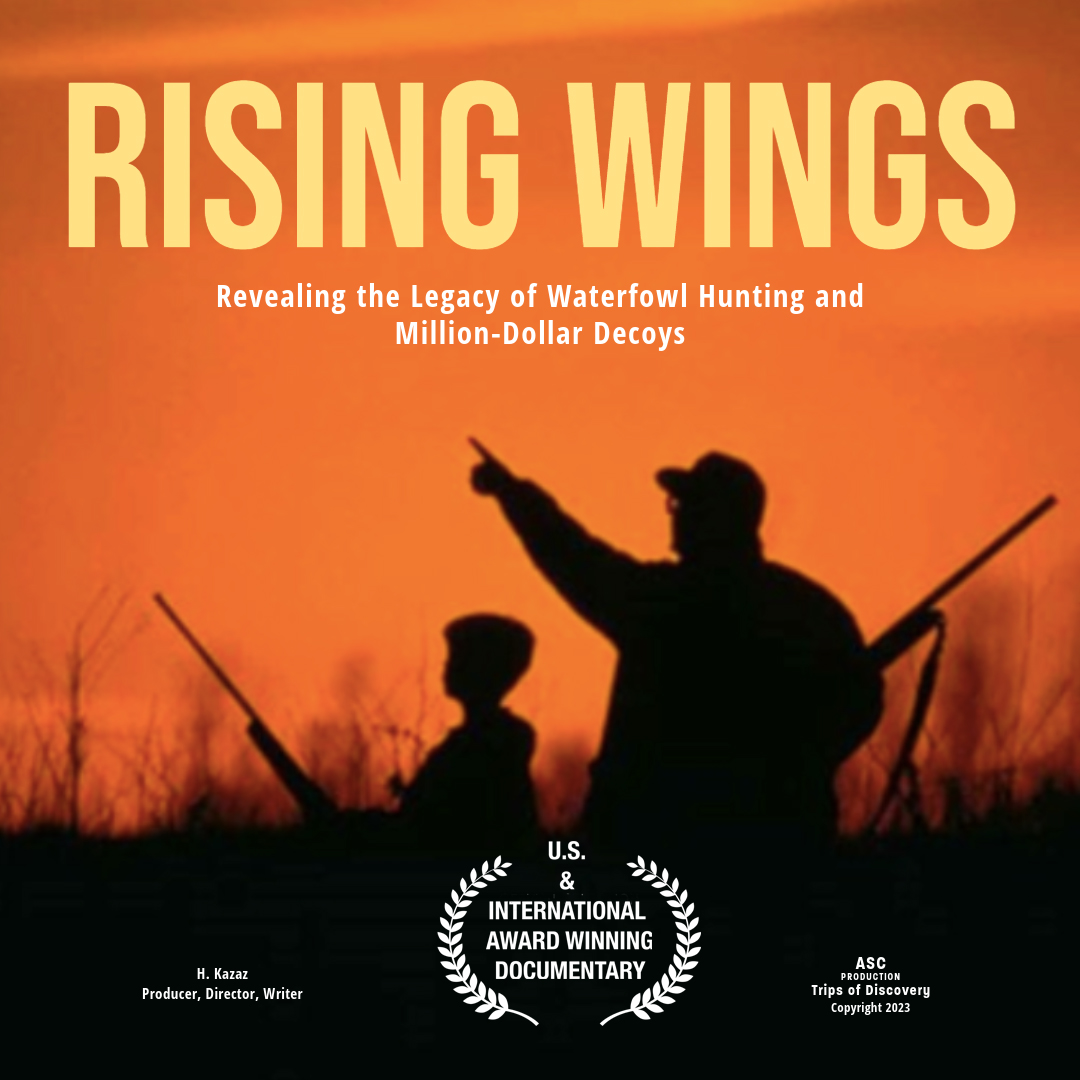
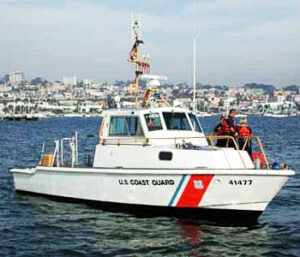



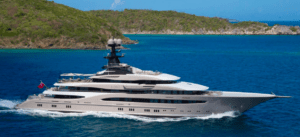





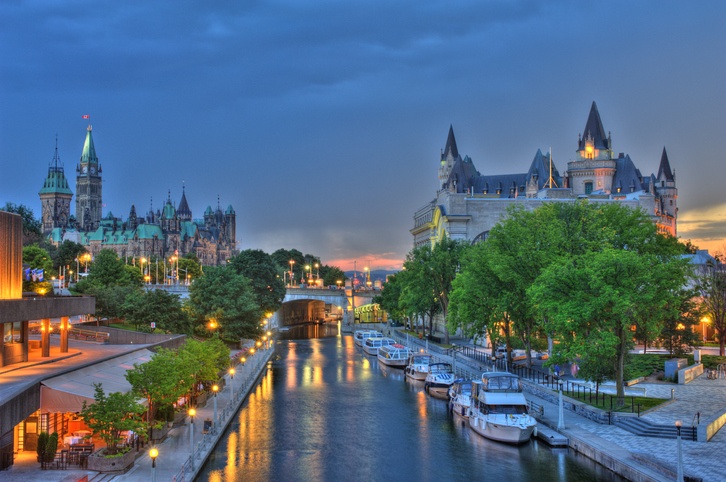
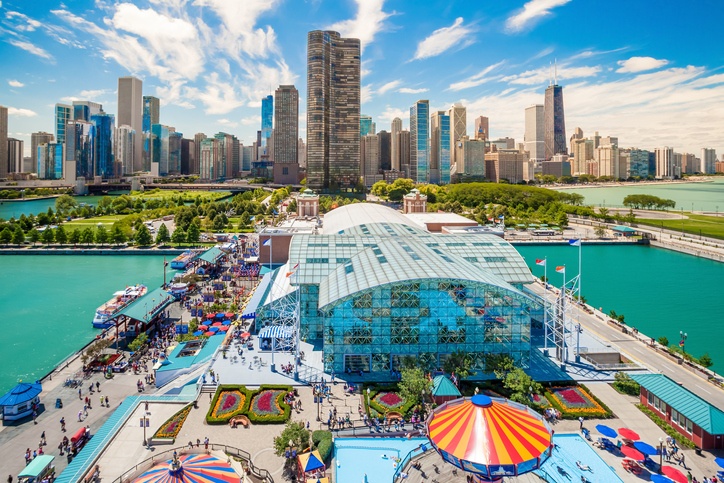
2 Responses
[…] extensive pleasure boating experiences on the water in our next post, Part 2 of this story. You can read 5 ways to love your woman captain at the helm – Part 2 here.Stay well. I hope to say hello to you if you spot my boat, Life’s AOK, in one of the locations […]
[…] or woman, would love to have in their boat, just like our previous captains covered in Part 1 and Part 2 of this 3-part series. If you wonder about the other two women captains I just mentioned, well, you […]